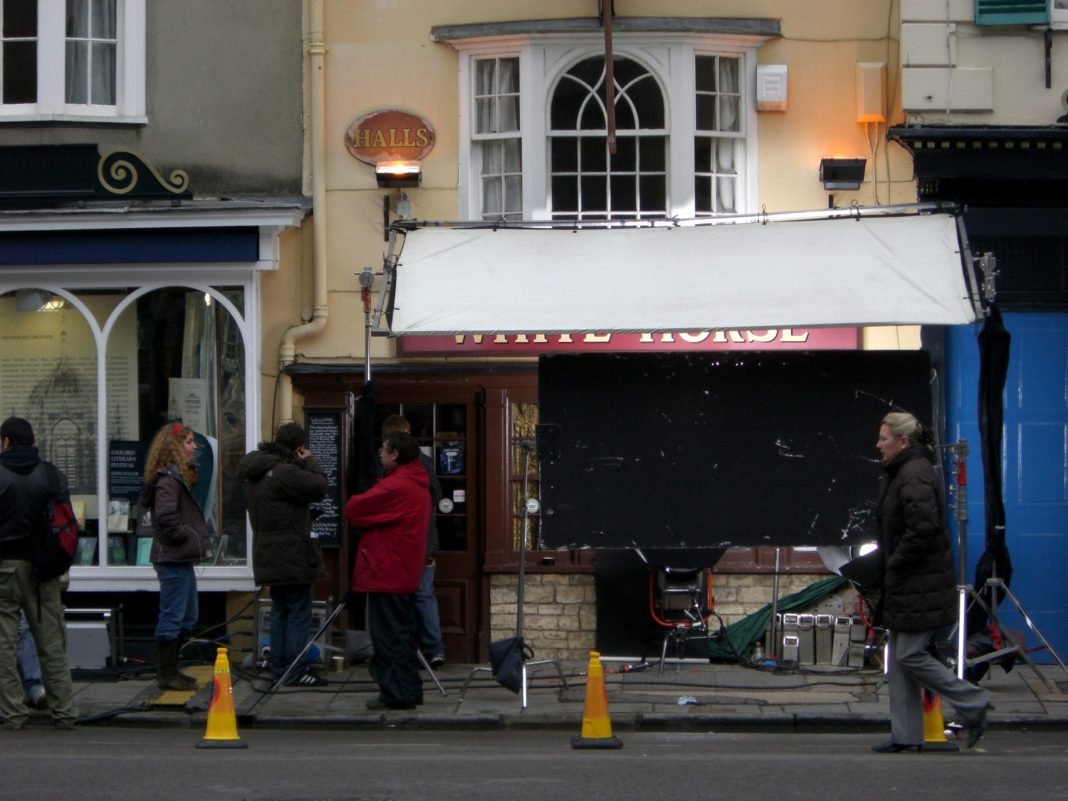My Oxford Year, a new Netflix rom-com, has received considerable attention. Yet as a scholar of the University of Oxford, I feel obliged to assess how accurately the film represents the Oxford ceremony and tradition. In what follows, I will highlight its failings as well as a few successes.
Master of Arts at Oxford is not an academic degree
The film erroneously presents the Master of Arts (MA) from Oxford as a postgraduate academic degree. For instance, Jamie Davenport addresses Anna De La Vega as an “MA scholar”. In fact, the MA at Oxford is not an academic degree which can be studied or examined, but a mark of seniority conferred, typically 21 terms after matriculation, on graduates who have completed the undergraduate Bachelor’s degree.
I emphasise that it is an undergraduate Bachelor’s degree as Oxford offers postgraduate Bachelor’s degrees, such as BPhil and BCL which do not entitle graduates to an MA. Postgraduate Master’s degrees at Oxford are definitely not MA but may be MPP, MFA, MBA, MTh, MSt, MPhil, MSc, or the like. In the subsequent scene, Anna is in a black gown with crimson silk in her graduation ceremony. The gown in which Anna is attired is the MA gown but she is not entitled to an MA at that moment, as she earns her postgraduate degree at Oxford without an undergraduate Bachelor’s degree from the very same University. If she completes her MSt in English Language and Literature, she should wear a black gown consisting of deep green art silk with white art silk. An MA from Oxford reflects ceremonial seniority but does not constitute an academic qualification for which we may study.
Classical Latin should be featured in matriculation ceremony
The matriculation ceremony in the film lacks Classical Latin. In the actual ceremony, the Senior Dean introduces students with “Insignissime Vice-Cancellarie (or Insignissima Vice-Cancellaria for a female Vice-Chancellor), praesentamus tibi hos nostros scholares ut referantur in Matriculam Universitatis”. The Vice-Chancellor replies “Scitote vos in Matriculam Universitatis hodie relatos esse, et ad observandum omnia Statuta istius Universitatis, quantum ad vos spectent, teneri.” It is undoubtedly a regrettable shame that the film, in toto, omits Classical Latin, which is one of the most vital ceremonial elements.
Matriculation is not a solitary journey
The film depicts Anna walking alone for her matriculation ceremony. But students, in fact, head to the Sheldonian Theatre in a group arranged by their college during a designated slot. For example, in Michaelmas Term 2024, students from Christ Church College, Lady Margaret Hall, and New College matriculate at 10:30am whereas those from Brasenose College, Regent’s Park College, and Wycliffe Hall do so at 1:30pm. Walking students are accompanied by their Dean of Degrees while Proctors stand outside the Sheldonian Theatre to manage entry. It is a pity that the film neglects these details.
College balls should take place in college
A college ball is, ex vi termini, a college matter and should surely take place in the college. For instance, a ball for Magdalen College should certainly be held at Magdalen College. But the film depicts Anna and her friends attending a college ball not at their own college, nor even in Oxford but, at a distance of approximately 47 miles away, at Knebworth House in Hertfordshire. In addition to this geographical inaccuracy, the film commits the further mistake of implying that Magdalen College is 750 years old when the college has not yet attained that milestone. The instances of inaccuracy induce me to practically forget that the film is even supposed to be based in Oxford.
Proper sub fusc
The film does not, nevertheless, get everything wrong. I will now focus on some of its more successful moments. To its credit, the film accurately displays the sub fusc. Anna and other students appropriately wear (1) a plain white collared shirt or blouse with sleeves, (2) a dark skirt with either black tights or stockings, or dark trousers with black socks, (3) a white bow tie, black bow tie, black full-length tie, or black ribbon, (4) an appropriate academic gown with (5) a mortar board or soft cap. As a postgraduate student, Anna is clothed in the advanced student gown and abides by the rules, such as ensuring that socks, tights, or stockings entirely cover the ankle with no gap between the bottom of the trouser leg or skirt and the top of the socks, tights, or stockings. It is remarkable that the film meticulously sticks to the regulations relating to academic dress but remains miserably oblivious to the nature of the MA (Oxon) or the procedure for matriculation day.
Matriculation and graduation at Sheldonian Theatre
In contrast to Mamma Mia: Here We Go Again, which inaccurately sets a graduation ceremony in a constituent college, My Oxford Year properly places both the matriculation and graduation ceremonies at the Sheldonian Theatre. The University ceremony is per se a matter for the entire University, not simply for the college. The film also illustrates the Dean of Degrees for each college wearing an MA gown in the matriculation ceremony no matter if the dean possesses a superior degree such as a DPhil. Such atypical conformity in the film may eventually echo, to a certain extent, the painted ceiling of Sheldonian Theatre, which depicts ignorance being expelled.
DPhil rather than PhD
The film pays particular attention to the extraordinary terminology used at Oxford. Notably, the film properly uses the abbreviation DPhil, instead of PhD used elsewhere, for Doctor of Philosophy. Professor Styan, for instance, calls Jamie “my annoyingly brilliant DPhil student”. This faithfully reflects the distinct nomenclature of Oxford.
Conclusion
To recapitulate, My Oxford Year is deficient in its depiction of some areas of Oxford ceremony, and tradition. The defects discredit the authenticity of the film. Moving forwards, should directors producing films about Oxford endeavour to avoid repeating the same mistakes, they would benefit from seeking the counsel from a scholar of the University of Oxford like myself.


